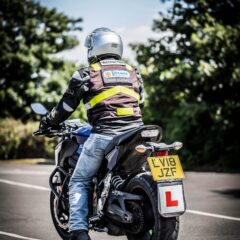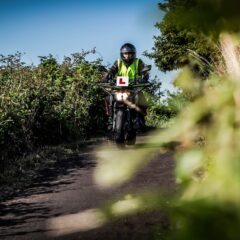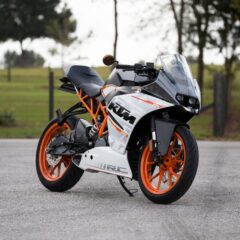
7 Top Motorcycle Accessories
With Christmas just around the corner, you might be wondering what to get your favourite motorcycle enthusiast or even a little something for yoursel...
 Phoenix Motorcycle Training LTD
Phoenix Motorcycle Training LTD
 Phoenix Motorcycle Training LTD
Phoenix Motorcycle Training LTD

So, you want to learn to ride a motorcycle? Riding a motorbike is fun and more economical than driving a car or commuting to work by train. It’s not particularly difficult either. However, there is a lot to take in. Our begginner’s guide to motorcycling will let you know the essentials. To get started you’ll need some basic training and certification to prove it.
Known as the CBT, compulsory basic training provides a firm foundation of motorcycling skills. Once you’ve completed training, you’ll receive a certificate. From there you can build upon your motorcycling skills and continue to learn to ride a motorcycle on UK roads.
At Phoenix Motorcycle Training, we aim to teach you how to be safe on the road while getting the most enjoyment possible from two wheels. Our instructors help students reach their motorcycling goals quickly. We build on any existing skills you have and most people receive their certification within two fun but intense days of training.
It’s important to continue practising on your own after receiving your CBT. Consciously practice your safety routines and motorcycling exercises to stay sharp. It will help embed the skills and knowledge you learn over your CBT course. And that helps you become a better, and safer, rider.
If you learn to ride a motorcycle with Phoneix Motorcycle Training, expect to pay around £160 for a day. Our courses include everything you need to learn to ride a motorcycle – aside from you and your boots! All insurance, motorcycle gear, the actual motorcycle you learn on and training materials are covered in the course cost.
No two riders are exactly the same and because of this, how long you need to complete your CBT is very much up to you. One of the core skills needed to learn to ride a motorcycle is balance. If you know how to ride a bicycle, balancing on a motorcycle will be easier.
Compulsory basic training usually lasts a day and most people receive their certification after a fun day of training. If you need some further training to ensure you are safe, we will discuss this with you at the time, and maty be asked to come back another day.
As the name suggests, all of the basics of motorcycle or scooter riding are covered in your CBT course. There are five essential elements to get through. The start, element A is all about the course and what you can expect from the training, as well as the clothing you should be wearing.
Part B of the course is practical, You’ll do this bit on the training site, not on public roads. You’ll get a feel for the motorcycle, learn how it works and learn how to carry out basic safety checks.
The next step, part C, is also practical. After getting a feel for the motorcycle, it’s time to take her for a ride! You’ll still be on the training grounds and away from other traffic. You’ll get to grips with balancing, turning, stopping, starting and moving through the gears. If you’re taking compulsory basic training for a moped, you won’t need to worry about gears because scooters and mopeds are automatic.
After taking time to get a hang of the practical side of motorcycling, it’s time for the theory. Part D of learning to ride a motorcycle covers motorcycle rules and laws, how to stay safe on the road, hazard perception and rider attitude.
The final element, E, covers everything you need to know about on-road riding. You’ll be back on your bike too. This time, you’ll be riding on the road with your trainer watching from their motorcycle and in radio contact with you while you ride. You have to complete a minimum of 2 hours on the road.
Learning to ride a motorcycle through compulsory basic training is all about gaining the foundational skills you need to continue learning to ride. Because of this, there is no pass or fail test like there is with a driving licence or many other qualifications. Instead, your skill will be continually assessed throughout the training. Once your trainer believes you have gained a basic level of skill, they’ll certify your competence with a DL196 form.
As you learn to ride a motorcycle, a good trainer will tailor the CBT course to your skill. This is done so you have more time practising and building the skills you’re not so great at rather than spending time improving basic skills you already have. For example, if your balance riding in a straight line is great, you may spend more time on turns.
The best way to learn to ride a motorcycle is with a friendly and knowledgeable trainer. Find someone who values your long-term riding goals and wants to build your skills. Cookie-cutter courses that simply put you through each element of the CBT won’t give you the confidence needed to continue learning to ride a motorcycle on your own.
It can help to call and chat with the training centres you’re considering learning with. Ask questions about how they teach people to ride and why that method works. Inquiring about advanced riding courses and how to build your skill will give you a better understanding of the course too.
We’re always happy to talk about motorcycles and training techniques with keen learners. If you’d like to learn to ride a motorcycle, get in touch with us today. We’d love to help you get your CBT and motorcycle licence.

With Christmas just around the corner, you might be wondering what to get your favourite motorcycle enthusiast or even a little something for yoursel...

If you love motorcycle riding, you’ve probably daydreamed about riding a motorbike for a living. A professional racer or stunt rider is OK for some...

Getting a UK motorcycle licence can seem a complicated process. Particularly when compared to a driving licence for a car. Whether you choose the pro...
This website uses cookies to personalise content, ads, and analyse traffic, sharing data with partners who may combine it with other information. See our Privacy Policy for more information.